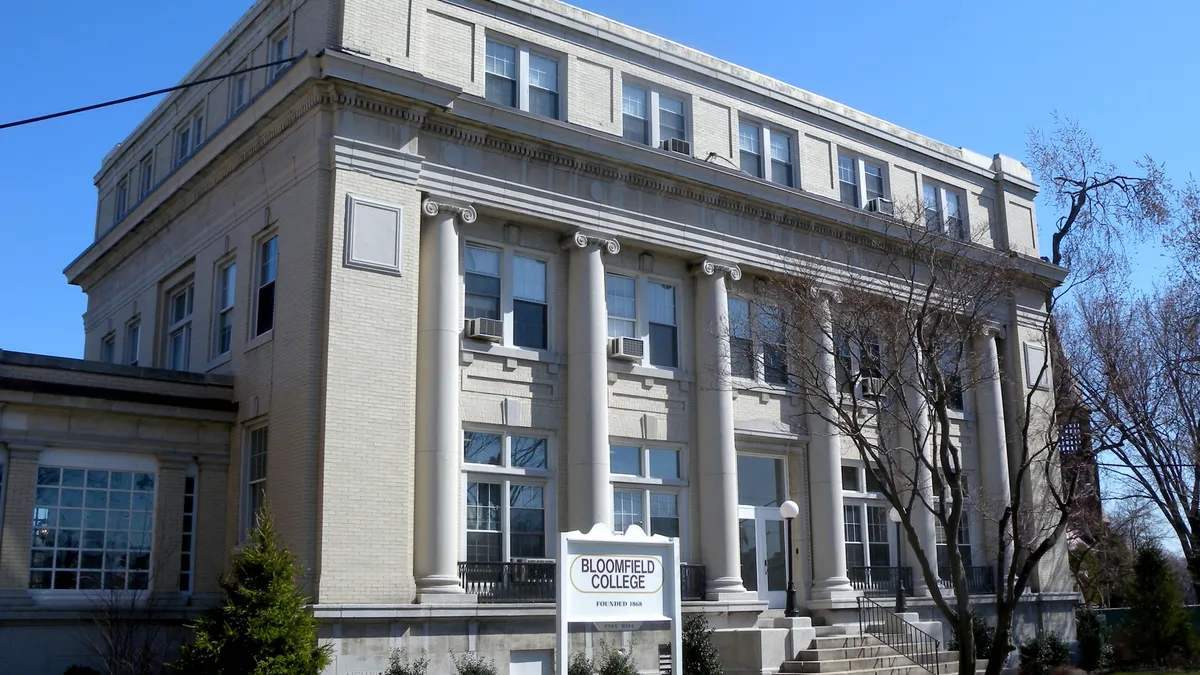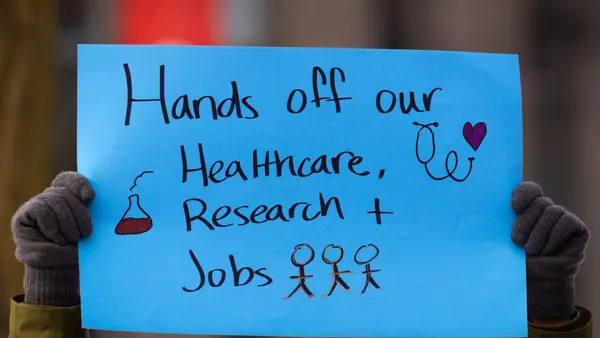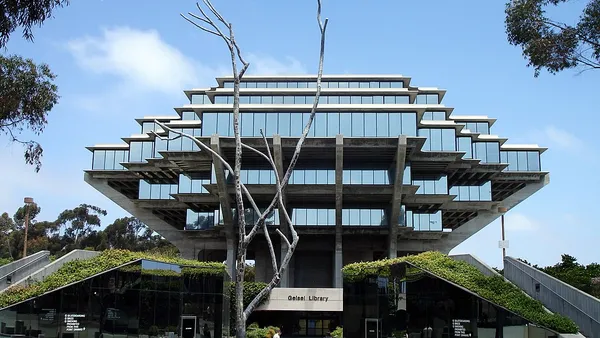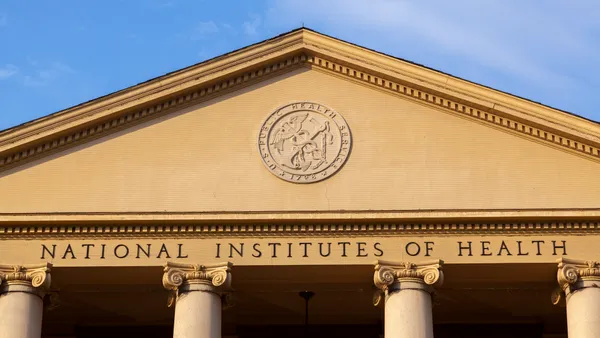Dive Brief:
- Bloomfield College, a small private nonprofit institution in New Jersey founded in 1868, is seeking merger partners and philanthropic support to help it remain open beyond the current academic year.
- Declining enrollment at the tuition-dependent, undergraduate institution has sapped its revenue and created major financial challenges that are expected to continue into the future, the college announced Tuesday. The pandemic exacerbated these issues, it said.
- Bloomfield is financially stable enough to finish the current academic year. But it needs "a substantial source of funding" to remain open next year, according to a Q&A posted on the college's website. It described the college's ability to remain open as a standalone institution as questionable.
Dive Insight:
Bloomfield joins a long list of colleges that shut down or were threatened by closure in recent years amid a challenging enrollment environment. Revenue and expense pressures are also particularly difficult for private nonprofit institutions that mostly serve nonwealthy students, as well as for institutions in the crowded Northeast higher education market.
The New Jersey college fits several of those descriptions. About seven in 10 of its students are eligible for federal Pell Grants, and Pell eligibility is often considered a proxy for low-income status. The median family income of its students is under $32,000, according to Bloomfield officials, and more than half of students are the first in their families to attend college.
Over 85% of the college's students are people of color. Its leaders describe it as New Jersey's only four-year college recognized as a predominantly Black institution, Hispanic-serving institution and minority-serving institution.
In 2010, Bloomfield enrolled 2,181 students, according to federal data. It lost more than a quarter of its student body since then, with 2020 enrollment falling to 1,533.
Its financial condition subsequently deteriorated, according to audited financial statements. In 2015, the college recorded revenue of $47.2 million, including $35.2 million in net tuition and fees. In 2020, its total revenue slipped to just over $39 million as tuition and fee revenue dropped to $27.7 million. It swung from a $2.8 million surplus in 2015 to a $2.4 million loss in that time.
This fall, the college's enrollment is even lower, 1,300 students, according to a description it posted for interested partners. It has 44 full-time faculty members. The college employs a total of 435 people, a spokesperson said in an email.
The college tried several strategies to balance the books over the last several years. It worked to reduce operating expenses, delay capital projects, end leases and sell little-used property. It also froze salaries, pension contributions and hiring, and it offered certain employees voluntary separation agreements.
But leaders still say they need a higher ed, corporate or philanthropic partner to continue the college's mission — educating students who were historically excluded from higher ed and enabling them to advance socioeconomically.
"By publicly announcing our situation, we hope to attract the attention of potential partners and major philanthropic donors who are passionate about making an impact on advancing opportunities for underserved student populations," the college's president, Marcheta Evans, said in a statement.
Discussions are ongoing with several colleges and universities to "partner, collaborate, or merge," according to Bloomfield's Q&A. It didn't name specific institutions. The college is seeking funding from foundations, government agencies and other organizations.
Bloomfield continues to accept new students. It remains accredited and able to participate in federal financial aid programs.















